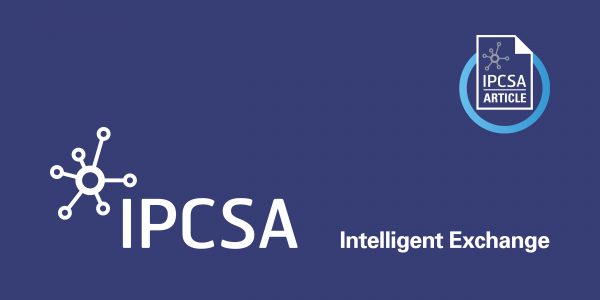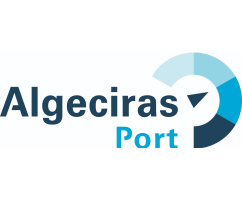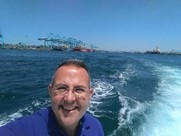

 Collaboration among stakeholders is the key to success in creating, developing and refining a Port Community System – something Algeciras Port Authority knows well. As the port authority moves ahead with the development of a new, more efficient and more powerful PCS – which will add provide additional logistics and port functionalities – it is drawing on the experience gained in the successful creation of its first Teleport Port Community System in 2011.
Collaboration among stakeholders is the key to success in creating, developing and refining a Port Community System – something Algeciras Port Authority knows well. As the port authority moves ahead with the development of a new, more efficient and more powerful PCS – which will add provide additional logistics and port functionalities – it is drawing on the experience gained in the successful creation of its first Teleport Port Community System in 2011.
The development of Teleport 2.0 is now under way. The original Teleport PCS provided a Single Window approach for exchanging information between and among stakeholders, providing services divided into two main sections: maritime processes support, including vessel schedule service, dangerous goods service, bunkering; and landside services for heavy traffic, including track and trace, and security control.

“The Port Authority considers that a PCS is one of the most strategic systems for the logistics port community,” says Teleport functional manager María Román. “For this reason, it is convinced of the need to progress towards a more efficient and powerful PCS from the logistics point of view. We need a revolution of our current PCS. The goal of Teleport 2.0 is to provide all the necessary value-added services to allow the exchange of information among all the stakeholders, showing more tracking, efficiency and transparency throughout the supply chain. Our main objective is to add value for the logistics port community.”
 Teleport 2.0 will see the PCS evolve in both its technical platform and its functionalities, says Teleport IT manager Paco Saucedo. “The aim is to include all the necessary services to support all the operational processes associated with the logistics port chain.”
Teleport 2.0 will see the PCS evolve in both its technical platform and its functionalities, says Teleport IT manager Paco Saucedo. “The aim is to include all the necessary services to support all the operational processes associated with the logistics port chain.”
Ten value-added services will be implemented, split into three distinct areas – land side, port side and sea side. A cross-sectional ‘Information Service’ will provide documentation and physical tracking of cargo along the supply chain, for the port community, importers and exporters. Teleport 2.0 will cover all types of traffic within the port, including containers, ro-ro, bulks, bunkering and passenger services.
Led by Algeciras Port Authority, the implementation of Teleport 2.0 has been divided into three phases. Design and implementation of the technical platform was started in May 2021 and is expected to finish in May 2022. Development and deployment of the value-added services has started and is expected to take two years. Finally, maintenance and support of the new PCS will start immediately after the first service is implemented.
“In the implementation of our current PCS, we learned that it is very strategic that the port community is involved in the project from the beginning,” says Paco. “It is extremely important for the success of the project. For this reason, we have involved the port community in the definition of the functional requirements of all the value-added services of Teleport 2.0.”
The team has held more than 150 meetings across the port community in the past few months, to gather ideas and feedback both formally and informally, says María. “We consider that the collaboration among stakeholders is the key to success. For this reason, we have set up three levels of collaboration – a steering committee, business process definition teams and software development teams.”
The steering committee is made up of representatives of public agencies and private companies, including the CEO of the port authority, the CEO of each of the maritime terminals, the manager of the border control point, and so on. It is responsible for overseeing the status of the project, monitoring risk management of Teleport 2.0, checking the management of change, strategic decision making, taking corrective actions and committing the necessary resources for the project.
The business process definition teams are formed of IT and operations managers from public agencies and private companies; with their operational, functional and tech expertise, the teams monitor project milestones and achievements, identify new functional requirements or procedures within the port community to be implemented in the PCS, and participate in the redesign of processes where needed. This working group will remain after the end of the project, to detect or participate in new functional requirements or new services in the future.
The software development teams bring together members of the port community from both public agencies and private companies, to define functional requirements and functional design of the added value services.
“Definitely, the experience with our current PCS has made a difference to the way we are working on Teleport 2.0,” says Paco. “In terms of collaboration, our work for Teleport 2.0 is a big step forward. We are seen as the centre of the PCS but in the future there will be even more sense of the collaboration between parties – we will have B2B services where the port authority is not part of the connection. As can be seen, collaboration is not new for us. We have a close relationship with the port community and the know we are open to feedback. For Teleport 2.0, we are putting this collaboration at the centre and trying to involve all the community in the sense that it is not a ‘project of the port authority’ – it is a ‘project of us’. It is a change of culture.”
María adds: “Teleport 2.0 will be ground-breaking. All the services have been defined, planned and developed with the community. The best ideas are always those we have in collaboration with the community.”
About IPCSA
IPCSA is an international association of Sea and Air Port Community System operators, sea and air port authorities and Single Window operators that is recognised across the globe for providing advice and guidance on the electronic exchange of information across borders and throughout the whole supply chain.
The association has members from across the globe who handle the exchange of information for Business to Business, Government to Business and Government to Government processes and facilitate the smooth cross-border movement of goods. This equates to the electronic exchange of information relating to more than 500 million TEU movements and 10 billion tonnes of cargo for air, sea and land transport – estimated to be in excess of 50 billion million exchanges every year.
IPCSA focuses on supporting and facilitating systems and innovations for Port Community System members and users, and promoting the use of international data standards in sea and air ports, at border crossings and via Single Window systems around the world. IPCSA is a recognised NGO with consultative status at UNECOSOC and IMO.
The PROTECT Group develops and supports the electronic reporting required by authorities for vessels entering or leaving a port or port area. It maintains and develops EDI through the PROTECT Guide. PROTECT is now fully integrated into IPCSA.
Contacts: Richard Morton, Secretary General, IPCSA
Tel: +44 7796334960
email: richard.morton@ipcsa.international
website: www.ipcsa.international
About Algeciras Port
Algeciras Port Authority, located at the geostrategic Strait of Gibraltar, is the first Spanish and fourth European port in terms of total cargo. With more than 110.000 ships/year crossing the Strait of Gibraltar, Algeciras is offering a superior quality of service, reliability, completeness, and connectivity promoting a one-stop-shop port concept for vessel services (bunkering, repairs, ship supplies and others). Algeciras Port is a zero-deviation point from main commercial routes, container traffic takes advantage from a very high port connectivity index and two mega-vessel-ready container terminals (APMT-A, TTI-A).
On the other hand, having facilities at the closest distance between Europe and Africa, Ro-Pax traffic benefits from high frequency connections, specialized 24/7 support areas and related value-added services.
website: www.apba.es



